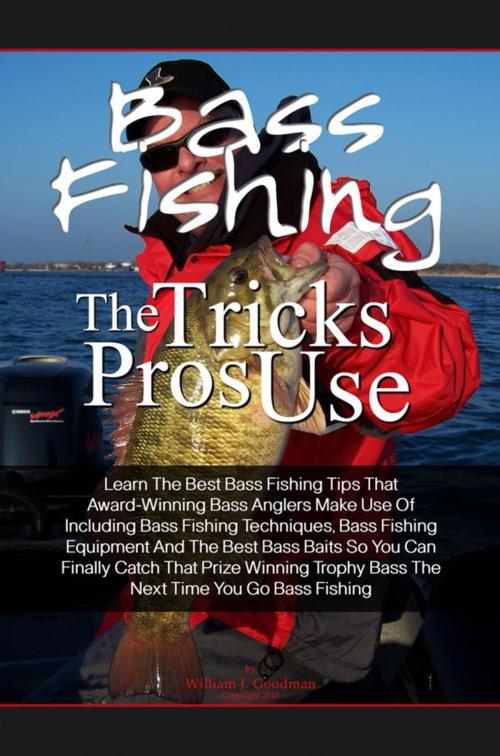Bass Fishing Tricks The Pros Use
Learn The Best Bass Fishing Tips That Award-Winning Bass Anglers Make Use Of Including Bass Fishing Techniques, Bass Fishing Equipment And The Best Bass Baits So You Can Finally Catch That Prize Winning Trophy Bass The Next Time You Go Bass Fishing
Nonfiction, Sports, Outdoors, Fishing| Author: | William J. Goodman | ISBN: | 1230000019389 |
| Publisher: | KMS Publishing | Publication: | September 23, 2012 |
| Imprint: | Language: | English |
| Author: | William J. Goodman |
| ISBN: | 1230000019389 |
| Publisher: | KMS Publishing |
| Publication: | September 23, 2012 |
| Imprint: | |
| Language: | English |
Bass fishing was once just a very well-liked hobby. Now, it’s turned out to be one of the most popular angling sport fishing where professional anglers compete for the coveted trophy and title of having been the one to reel in the biggest bass of the competition.
There is a lot more involved in catching bass than just simply hoisting in your fishing rod into the water and waiting for the bass to sink its teeth on your bait. It all starts with the type of bait you use. Most expert anglers prefer to use plastic worms and then some would recommend using spinner baits and crank baits. The bait you use will depend on your fishing area. If you’re fishing in a small area where bass commonly gather together, then using worm bait can prove to be successful. If you are fishing in a larger area, then a worm might be less effective since you cannot feel when the bass does get hold of your fishing rig. Spinner baits allow you to cover more area faster. You can set it out to float on the water surface or send it deep underwater and allow it to spring back and forth on the bottom to lure in bass. They are also very flexible to maneuver because of their tangle-free designs, so they are perfect to use when you are exploring around trees or even partly underwater. If you are fishing on vast areas of water where bass is widely scattered, crank baits are the perfect type to use.
The best advice that expert anglers often give out to the amateurs is to keep on practicing. Practice will help you get the feel of the water and the nature of the bass. Practice will also help you hone your techniques better. The more you get to know your sport, the better you will become at it, the greater your chances to attain that coveted trophy.
Bass fishing was once just a very well-liked hobby. Now, it’s turned out to be one of the most popular angling sport fishing where professional anglers compete for the coveted trophy and title of having been the one to reel in the biggest bass of the competition.
There is a lot more involved in catching bass than just simply hoisting in your fishing rod into the water and waiting for the bass to sink its teeth on your bait. It all starts with the type of bait you use. Most expert anglers prefer to use plastic worms and then some would recommend using spinner baits and crank baits. The bait you use will depend on your fishing area. If you’re fishing in a small area where bass commonly gather together, then using worm bait can prove to be successful. If you are fishing in a larger area, then a worm might be less effective since you cannot feel when the bass does get hold of your fishing rig. Spinner baits allow you to cover more area faster. You can set it out to float on the water surface or send it deep underwater and allow it to spring back and forth on the bottom to lure in bass. They are also very flexible to maneuver because of their tangle-free designs, so they are perfect to use when you are exploring around trees or even partly underwater. If you are fishing on vast areas of water where bass is widely scattered, crank baits are the perfect type to use.
The best advice that expert anglers often give out to the amateurs is to keep on practicing. Practice will help you get the feel of the water and the nature of the bass. Practice will also help you hone your techniques better. The more you get to know your sport, the better you will become at it, the greater your chances to attain that coveted trophy.















